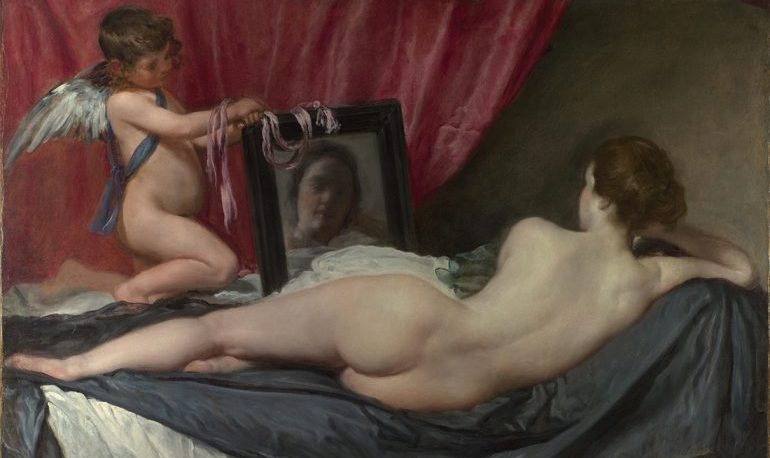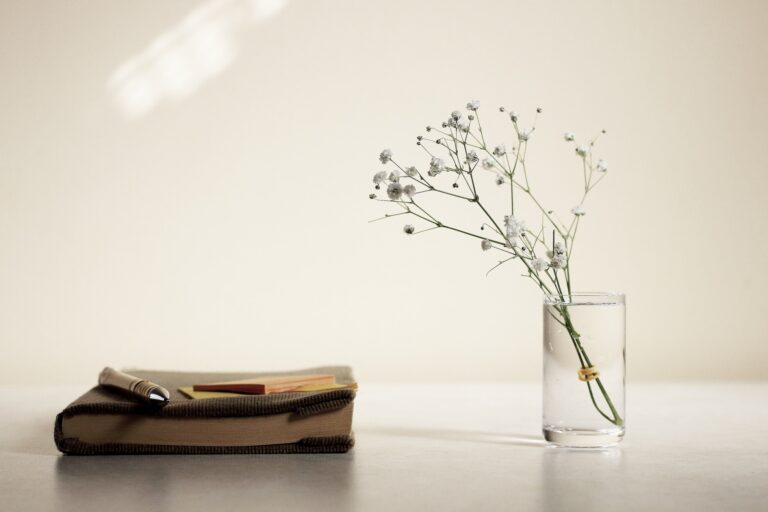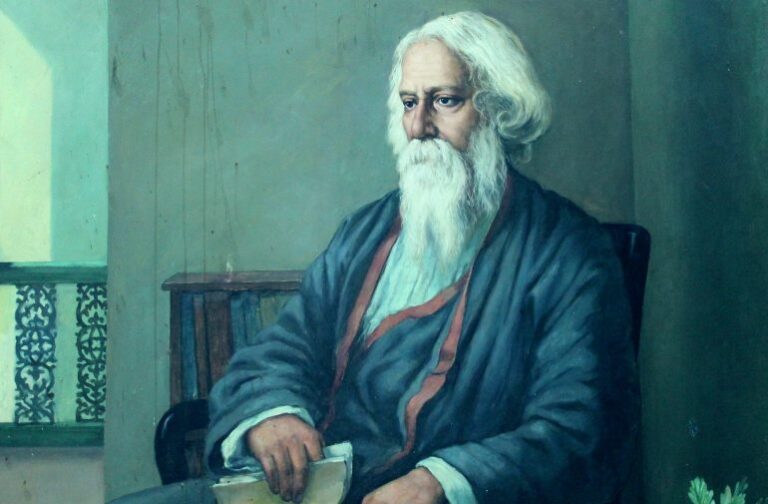What’s Self-Love Got to Do with It?
Two years ago a generous woman handed me a spare key to the private office where she conducts her psychotherapy practice. I’ve since spent most weekends and some Jewish holy days, hours both glorious and mundane, in this Greenwich Village brownstone where I read and write and fret and nap on a red couch. I don’t receive therapy from Dr. X, but her gift of a creative private space—an ongoing residency of sorts—is its own therapy, free of charge.
Even if the shelf above her desk didn’t hold the Complete Psychological Works of Sigmund Freud bound in blue cloth (along with every secondary source on the man you can imagine), the paraphernalia honoring the father of psychosis scattered around the room clears up any doubt to the school of thought Dr. X follows: a plastic Freud action figure with hinged arms and the infamous cigar cinched between two tiny fingers; a Freudian Sips mug; a paper doll Freud with a hand cupped invitingly behind his ear; a framed poster of The New Yorker cover of Siggie driving a yellow cab while advising a patient reclined in the backseat; and a notepad of Freudian Slips.
When restless I read magazines in the waiting room or study the contents of the mini refrigerator in the adjacent kitchenette. I long ago developed the interloper’s eye, the art of looking and moving in places that don’t belong to me. I remember the objects I inspected in my early days of roaming when my mother took me with her on housekeeping jobs, objects I could not resist: a trophy with a small bronze eagle at its base, an old china doll with sharply-drawn eyebrows, a blue-flowered Japanese urn that lurched from my small hands, its extravagance deducted from my mother’s paycheck the following week.
I often imagine the people who come here during office hours, the stories they might tell Dr. X, all their vulnerabilities, traumas and despair, hubris, epiphanies, self-criticism or forgiveness. So many things released and reached within these walls. Hard questions that gnaw at their guts, questions realized and lived through again and again in the process of therapy. In form and in content, for me, it is the very stuff of art: the complexities and contradictions of human nature, a repeated return to obsessions, methods and processes of making the internal external, the need to locate and tell something that feels absolutely necessary—or even to invent that something—and have it be received.
And so, in this very specific space where people strive to understand themselves, I read and write. These days in the office I’m contemplating love—I wonder, do you have to love yourself to make art? Is art making, like choosing therapy, an act of self-preservation? At the very least, isn’t the desire to create something a gesture of self-affirmation, even if it leads to self-destruction?
Toward the end of Elena Ferrante’s final Neapolitan novel, The Story of the Lost Child, the character Elena is haunted by the possibility that her brilliant lifelong friend Lila may be writing a book. Such a book, she believes—undoubtedly a work of genius—would outshine her own books and hard-fought literary career. At Elena’s constant questioning, Lila says,
I did answer you, but you pretend not to understand. To write, you have to want something to survive you. I don’t even have the desire to live, I’ve never had it strongly the way you have. If I could eliminate myself now, while we’re speaking, I’d be more than happy. Imagine if I’m going to start writing.
It’s difficult for Elena to accept what Lila tells her; she knows what her friend is capable of creating. But what Lila says is true to her character: she does not and has never loved herself enough to care long about any of her projects. And so finally, with immense relief and sadness Elena realizes,
Lila didn’t have that type of ambition, she had never had ambitions. To carry out any project to which you attach your own name you have to love yourself, and she had told me, she didn’t love herself, she loved nothing about herself.
An artist might not love herself, but there must be something in her that wants to survive, otherwise there would be no need for words to fill up a blank rectangle, no need to hold on to ideas or experiences demanding to be remade in language. Art, no matter how cynical, cannot be made without hope.
Then there’s Sheila Heti’s How Should a Person Be?, part novel, part self-help manual, and part exploration of the artistic impulse. The character of Sheila addresses the question the book’s title poses early on:
I sometimes wonder about it, and I can’t help but answer like this: a celebrity…My hope is to live a simple life…By a simple life, I mean a life of undying fame that I don’t have to participate in.
Acknowledging the foolishness in this quest for stardom, Heti the writer mocks Sheila, but she also believes the impulse to make art involves that same vanity. Sheila reveals her grandiose creative ambitions,
I am writing a play that is going to save the world. If it only saves three people, I will not be happy. If with this play the oil crisis is merely averted and our standard of living maintains itself at its current level, I will weep into my oatmeal.
Such is the gamut of extremes on the scale of self-preservation, which according to these characters—Lila who won’t write because she doesn’t care to exist and Heti’s Sheila who feels she doesn’t exist until she attains universal acclaim—would be the function of writing.
Sometimes the happiness at getting something done one morning feels like enough, fulfilling that daily craving, until the need for a receiver, the acknowledgment from an audience, becomes totally and intolerably paramount, but then that tide too subsides again. These are the highs and lows of artistic life, healthful doses of confidence and dissatisfaction, even despair.
Is the satisfaction in seeing a work fully realized whether or not someone experiences it—an entirely personal pursuit? Or does the comfort of self-preservation come at the very least from seeing the words printed on paper and wrapped in a dust jacket? Or never feeling satisfied until the work is not only in people’s hands, but preserved in their minds for posterity?
There’s an old art school adage that says, “art isn’t therapy.” “Art isn’t therapy” means if you are working something out somewhere in the process of making, you forfeit an objectivity, professionalism, or seriousness that earns the right to a readership. These days, given the literature I’m encountering, I’m tending to disagree. Art and therapy both fulfill the distinctly human desire to be heard, and I get a little emotional when I think about what E. M. Forster once said: “One is certain of nothing but the truth of one’s own emotions.”



